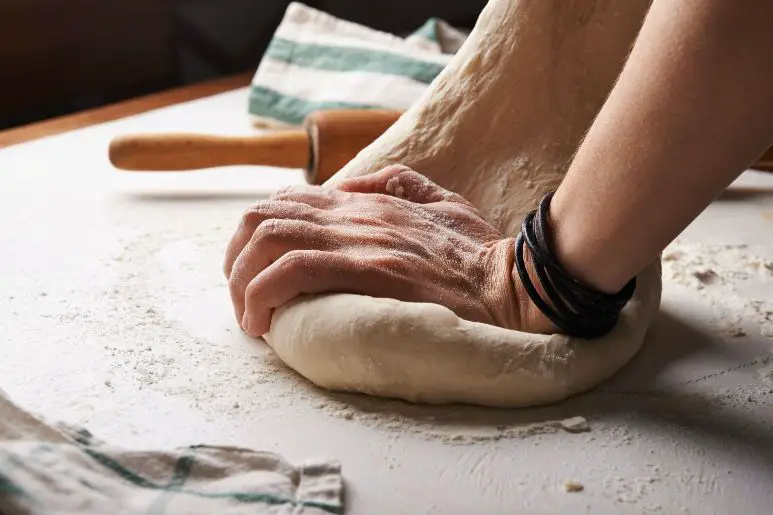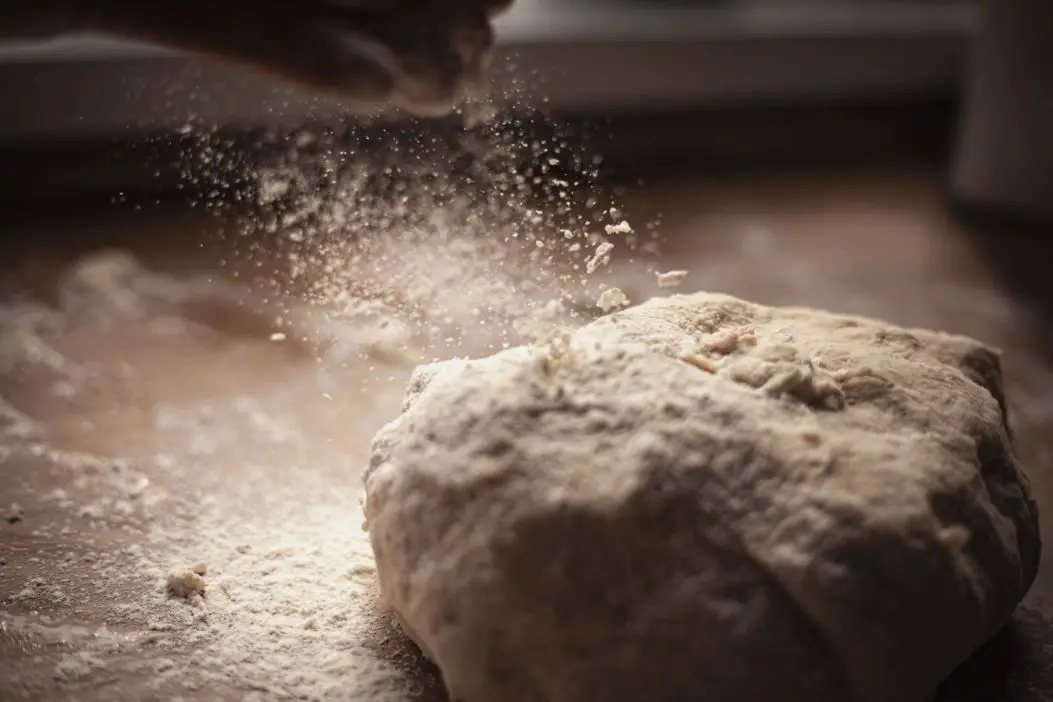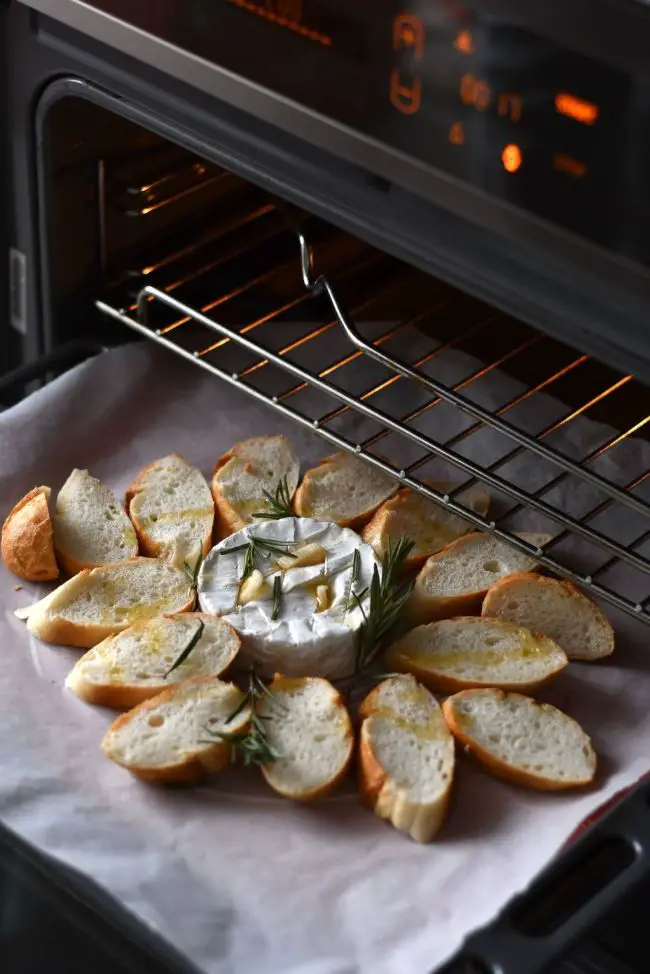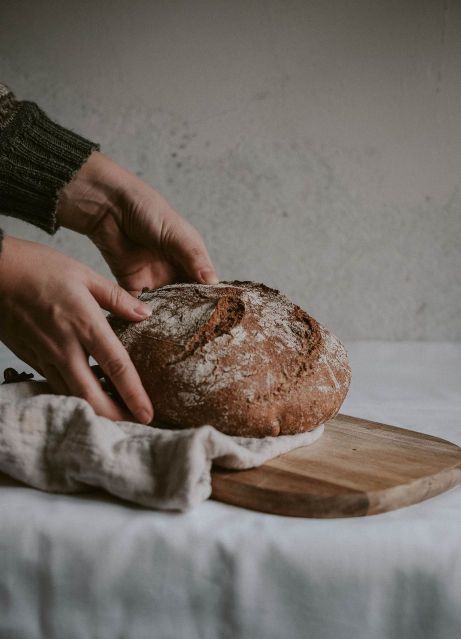Baking bread is an art form that combines precise science with culinary creativity.
While the process may seem simple, achieving the perfect loaf can be quite a challenge, especially when holes start appearing unexpectedly.
These holes not only affect the aesthetics of your bread but also impact its texture and overall enjoyment. But fear not!
In this article, I’ve covered the 8 reasons behind hole formation in bread and have provided you with some effective tips and tricks on how to prevent holes in bread.
So let’s get started!
Why Do I Get Holes in My Bread? Top 8 Reasons
Breadmaking is both an art and a science. To understand why holes form, let’s explore the fascinating science that takes place during the baking process.
Here are the top 8 common reasons:
1. Air Pockets from Kneading or Mixing
When you engage in the process of kneading or mixing your bread dough, there is a possibility of unintentionally incorporating small pockets of air into the dough.
These air pockets, while generally contributing to the desirable texture of the bread, can also play a role in the formation of holes within the bread’s structure.
It is important to note that the presence of some air pockets is normal and can enhance the overall eating experience of the bread.
However, excessive incorporation of air can potentially lead to the development of larger holes within the final baked bread.
2. Improper Mixing or Proofing
Properly developing the gluten structure within the dough is crucial for achieving an even distribution of air.
In instances where the dough has not been mixed thoroughly or hasn’t been allowed sufficient time to rise (also known as proofing), the gluten may not have had the opportunity to develop evenly.
Consequently, this uneven gluten development can result in air being unevenly distributed within the dough, ultimately leading to the formation of holes in the bread’s crumb.
3. Excessive Fermentation
During the fermentation process, yeast interacts with the dough, producing carbon dioxide gas.
This gas is responsible for the bread’s rise and aeration. However, if the dough undergoes an excessive fermentation period, an excessive amount of carbon dioxide gas can be generated.
This surplus gas production can contribute to the creation of larger air pockets or holes in the bread’s structure.
4. Inaccurate Shaping Techniques
The shaping of the dough before it goes into the oven is a critical step in the bread-making process.

If the dough is not properly shaped, there is a risk of trapping pockets of air within its structure.
As the dough continues to rise and expand during baking, these trapped air pockets can enlarge and develop into holes in the final bread.
5. Incorrect Ingredient Ratios
When the proportions of ingredients like flour, water, yeast, and salt are not accurately measured, it can significantly affect the overall texture and structure of the dough.

Flour provides the backbone of the dough, water hydrates the flour and aids gluten development, yeast contributes to fermentation, and salt impacts flavor and controls yeast activity.
Incorrect ratios disrupt this delicate balance, leading to inconsistencies in the dough’s composition.
This imbalance can ultimately result in irregular hole formation within the bread’s crumb.
6. Uneven Baking
The baking phase plays a pivotal role in determining the hole formation within the bread.
If the baking temperature is excessively high, a phenomenon known as “oven spring“ can occur.
During this rapid rise in temperature, the outer layer of the dough sets quickly due to the high heat, effectively trapping gas bubbles inside the dough.
Consequently, this can result in the creation of larger holes or pockets within the final bread structure.
7. Over Active Yeast
The activity level of the yeast employed in the bread-making process has a direct correlation with the size of the air pockets in the final product.
When yeast is particularly vigorous, it generates an excessive amount of carbon dioxide gas as a byproduct of fermentation.
This surplus gas can accumulate within the dough, leading to the formation of larger air pockets during baking.
The extent of yeast activity is influenced by factors such as temperature, hydration level, and proofing time.
8. Poor Dough Handling
The manner in which the dough is handled during the shaping stage holds significance in determining the evenness of air distribution throughout the bread.

Vigorous or rough handling of the dough can disrupt the gluten network that gives bread its structure.
Gluten, a protein present in flour, contributes to dough elasticity and helps trap gas produced during fermentation.
Excessive handling can weaken the gluten network, hindering its ability to retain gas evenly, thereby resulting in uneven air pocket distribution within the bread’s interior.
How to Prevent Holes in Bread – Revealed
Preventing holes in bread can be achieved through careful handling of the dough and proper baking techniques.
Here are some tips to help you avoid getting holes in your bread:
1. Proper Kneading
Proper kneading of the dough plays a critical and foundational role in fostering the development of gluten.

Gluten, a protein complex, contributes significantly to the structural strength of the dough.
It acts as a cohesive agent, effectively preventing the formation of undesired large air pockets within the dough.
During the kneading process, the primary objective is to attain a texture that is both smooth and elastic, characterized by a strong cohesion among the dough’s constituents.
This methodical kneading ensures that the air incorporated into the dough is uniformly distributed, leading to a final baked product that boasts a consistent and even quality throughout.
2. Even Distribution of Ingredients
An essential aspect of the dough preparation process involves the careful and thorough mixing of all ingredients to achieve an even distribution.
This step is pivotal in preventing the formation of isolated pockets within the dough, which could potentially contain ingredients that are inadequately mixed or even dry.
Such pockets might ultimately give rise to irregularities or voids in the finished baked goods.
By making sure to mix all the ingredients together evenly, you ensure that everything blends together well. This creates a final product with a smooth texture and a consistent taste.
3. Degassing
After the dough has gone through the initial rising process, it’s important to gently release any accumulated excess gas.
This can be achieved by carefully deflating the dough. The purpose of this step is to evenly distribute the air within the dough, which helps prevent the formation of overly large holes during baking.
By gradually reducing the pressure of the gas, you contribute to achieving a controlled and uniform crumb structure in the final baked product.
4. Proper Shaping
During the shaping phase of the dough, it’s crucial to be mindful of avoiding the capture of significant air pockets.
As you mold the dough into the desired shapes, take the opportunity to delicately press out any excess air that might be trapped within.
This seemingly simple yet essential action holds a key role in ensuring a consistent texture in the end result of your baking endeavors.
The technique works by minimizing any uneven distribution of air within the dough.
By paying attention to the details of shaping and effectively removing excess air, you are setting the groundwork for a finished baked product that not only displays an attractive appearance but also boasts a pleasantly uniform texture.
5. Allow a Second Rise
Once you’ve completed the initial shaping of the dough, there’s a valuable technique you can employ: allowing the dough to rise again.

This additional rising period serves a specific purpose, which is to address any pockets of air that may have formed during the shaping process.
These air pockets can create variations in texture if left unchecked.
The second rise plays a role in redistributing the air within the dough, promoting a more consistent and uniform texture throughout the entirety of the bread.
6. Avoid Overproofing
It’s crucial to exercise caution when deciding how long to let the dough undergo the proofing process.
Allowing the dough to proof for an extended period can lead to the excessive accumulation of gas within the dough.
This excessive gas production can then lead to the formation of larger air pockets in the bread’s crumb structure.
To avoid this undesirable outcome, it’s important to keep a close watch on the dough as it goes through the proofing stage.
This way, you can ensure that it doesn’t become overly saturated with air.
7. Proper Baking Time and Temperature
The correct baking time and temperature are critical factors that directly impact the quality of the baked bread.

If the bread is not baked for a sufficient amount of time, certain areas might remain undercooked, leading to uneven textures.
This can manifest as doughy or gummy portions that detract from the overall eating experience.
Conversely, if the bread is baked for too long at a high temperature, the moisture content in the bread can evaporate excessively, resulting in a dry and unappetizing final product.
Therefore, finding the precise balance between baking time and temperature is essential to ensure that the bread is evenly cooked, has a desirable texture, and retains its moisture.
8. Introduce Steam during Baking
Introducing steam into the oven during the initial phase of baking has a significant impact on the bread’s final outcome.
Steam creates a humid environment within the oven, which has multiple benefits. Firstly, the humidity helps to keep the surface of the bread moist during the early stages of baking.
This moisture delays the formation of a dry crust, allowing the bread to expand more freely.
Secondly, the steam aids in the gelatinization of starches on the bread’s surface, facilitating a desirable and attractive golden-brown color once the crust begins to form.
Furthermore, the humid environment hinders the rapid development of a hard crust, giving the bread more time to rise and expand uniformly.
The controlled expansion prevents the formation of overly large holes within the bread’s structure, resulting in a consistent and pleasing texture.
Overall, the introduction of steam promotes even baking, enhances visual appeal, and contributes to the overall taste and enjoyment of the finished bread product.
9. Proper Cooling
A crucial step in ensuring the optimal quality of baked bread involves the careful execution of the cooling phase following the baking process.
It is vital to resist the temptation of cutting into the freshly baked loaf while it retains excessive heat.

Doing so prematurely can lead to the deformation and compression of the bread slices, creating a visual effect akin to the presence of holes within the structure.
To maintain the bread’s structural integrity, it is essential to exercise patience and allow the bread to cool adequately before initiating the slicing procedure.
This deliberate cooling period serves a crucial purpose it facilitates the gradual stabilization of the bread’s internal moisture content and structure.
As a result, the loaf becomes more resilient, and the end result is a collection of evenly sized slices that are not only visually appealing but also consistently structured.
10. Utilize Bread Improvers
In the domain of bread production, the utilization of specific commercial bread improvers or dough conditioners can lead to significant enhancements in the overall quality of the dough and play a pivotal role in preventing the formation of voids within the bread’s composition.
These additives are carefully formulated to possess unique properties that influence the behavior of the dough. By introducing these enhancers into the dough-making process, a more robust and resilient matrix is established within the dough.
This, in turn, reduces the likelihood of undesired voids or holes forming during the baking process.
Consequently, the end result is a finished bread product that not only exhibits superior structural integrity but also showcases a consistently uniform texture throughout its crumb.
The incorporation of these specially designed additives contributes to the creation of a loaf that meets high standards in both appearance and quality.
Are Holes in Bread Good?
Yes, holes in bread can be a positive attribute, indicating proper fermentation and a desirable texture.
These holes, often referred to as “crumbs,” are a result of carbon dioxide gas produced by yeast during the bread-making process.
Adequate fermentation allows the dough to rise, creating a light and airy structure.
This leads to a more appealing mouthfeel, as well as enhanced absorption of spreads and flavors.
However, excessively large or irregular holes might suggest underdeveloped gluten or uneven shaping.
Ultimately, the presence of holes in bread is a balance between aesthetics and functionality. It’s worth noting that preferences vary some enjoy a denser crumb, while others savor the open, hole-filled texture.
So, whether holes are good depends on personal taste and the specific bread recipe being prepared.
How To Prevent Holes in Bread – Conclusion
In conclusion, the formation of holes in bread is a result of intricate interactions between various factors during the bread-making process.
Whether it’s the incorporation of air pockets, improper mixing, excessive fermentation, inaccurate shaping, incorrect ingredient ratios, overactive yeast, or poor dough handling, each element contributes to the final texture and structure of the bread.
However, armed with knowledge and proper techniques, you can successfully prevent the occurrence of unwanted holes and achieve a beautifully consistent and flavorful loaf.
By following essential practices such as proper kneading to develop a strong gluten structure, ensuring even ingredient distribution, careful degassing to control air pockets, and proper shaping, allowing for a second rise to address any irregularities.
By avoiding overproofing, and adhering to precise baking time and temperature, you can create bread with an even and appealing crumb.
Introducing steam during baking can further enhance the bread’s quality by promoting controlled expansion and preventing the development of oversized holes.
Ultimately, achieving hole-free bread is a combination of artistry, science, and careful execution.
By embracing these techniques and insights, you’ll be on your way to consistently producing bread that delights the senses and satisfies the palate.

